Veranstaltungen
Lecture Series: Comparative Studies on Buddhism in Taiwan and Mainland China
The Vinaya Practices in Contemporary Chinese Buddhism: A Cross-Strait Perspective on Buddhist Nunneries
Dr. Tzu-Lung Chiu
(Research Fellow, Max Planck Institute for the Study of Religious and Ethnic Diversity, Göttingen)
Monday, 16th December 2019, 18.15-19.45
Universität Hamburg, Edmund-Siemers-Allee 1, Room 121 ESA Ost (East Wing)
The lecture explores the contemporary revival of Chinese Mahāyāna Buddhism, and includes the Cross-Straits comparative typological study of Buddhist institutions and monastic religious practices. Dr. Chiu’s approach links theory, e.g., the Vinaya Piṭaka, with practice as observed via ethnographic fieldwork, with the aim of deepening our understanding of how Buddhist traditions are practised in modern society. It is important to bear in mind that the Vinaya were compiled in Ancient India, a context dramatically different from contemporary Chinese conditions – even monastic ones. It is therefore eminently worth investigating how Vinaya rules are being adapted to specific local Chinese contexts and/or a Chinese cultural ethos by contemporary Buddhist institutions, and perhaps more importantly, what difficulties Chinese nuns experience in observing particular precepts due to socio-cultural factors, and the extent to which they adapt their behaviour (or the rules themselves) to deal with such difficulties.
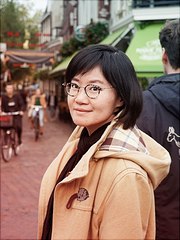 Tzu-Lung Chiu is a postdoctoral fellow at the Max Planck Institute for the Study of Religious and Ethnic Diversity. In 2016 she received a Ph.D.at Ghent University, Belgium. In her dissertation (Contemporary Buddhist Nunneries in Taiwan and Mainland China: A Study of Vinaya Practices), she explored Chinese Mahāyāna nuns’ perceptions of how they interpret and practice vinaya rules in the contemporary contexts of Taiwan and Mainland China. Previously, Chiu was a Postdoctoral Fellow in Buddhist Studies at the University of California, Berkeley (2016-2017). She obtained her MA in Women’s Studies at Lancaster University, UK. Her research interests include India vinaya rules, Chinese Buddhism, gender, the Bodhisattva rules, the qinggui (rules of purity), Humanistic Buddhism, and Contemporary Chinese Buddhism in Southeast Asia (especially Bangkok, Yangon and Mandalay).
Tzu-Lung Chiu is a postdoctoral fellow at the Max Planck Institute for the Study of Religious and Ethnic Diversity. In 2016 she received a Ph.D.at Ghent University, Belgium. In her dissertation (Contemporary Buddhist Nunneries in Taiwan and Mainland China: A Study of Vinaya Practices), she explored Chinese Mahāyāna nuns’ perceptions of how they interpret and practice vinaya rules in the contemporary contexts of Taiwan and Mainland China. Previously, Chiu was a Postdoctoral Fellow in Buddhist Studies at the University of California, Berkeley (2016-2017). She obtained her MA in Women’s Studies at Lancaster University, UK. Her research interests include India vinaya rules, Chinese Buddhism, gender, the Bodhisattva rules, the qinggui (rules of purity), Humanistic Buddhism, and Contemporary Chinese Buddhism in Southeast Asia (especially Bangkok, Yangon and Mandalay).
A flyer of the event may be downloaded here.
Lecture Series: Comparative Studies on Buddhism in Taiwan and Mainland China
Buddhist Philanthropy outside the PRC since 1949 and its Cross-Strait Implications
Prof. André Laliberté
(Professor, School of Political Studies, University of Ottawa)
Monday, 25th November 2019, 18.15-19.45
Universität Hamburg, Edmund-Siemers-Allee 1, Room 121 ESA Ost (East Wing)
The lecture gives examples of continued provision of social services by Buddhist institutions in the territory remaining under the control of the Republic of China (ROC) in Taiwan after 1949 and in other Chinese societies such as Hong Kong, Singapore, and Macau, as well as in Chinese communities throughout Southeast Asia since the second half of the twentieth century. Despite the significant differences in the welfare regimes of these societies, at different levels of development and with varied degree of state intervention in social security and assistance, they share similarities in their respective approach to the role they grant to non-state actors and religious organizations in particular, in assisting the state in the provision of social services. Based on these historical developments, the lecture further considers similarities and differences regarding the former and the present status of Buddhist philanthropy in China. More than in the past, the possibilities of Buddhist philanthropy in societies with so many different conditions point to the wide range of condition making that possible in China as well.
 André Laliberté is Professor in comparative politics at the School of Political Studies, University of Ottawa. In 2019, he is Fellow of the Kolleg-Forschungsgruppe "Multiple Secularities – Beyond the West, Beyond Modernities", Leipzig Universität. He is also Co-Director of the Chair in Taiwan Studies at the University of Ottawa. He has written The Politics of Buddhist Organizations in Taiwan, 1949-2003, and in 2019, has co-edited with Ji Zhe and Gareth Fisher, Buddhism after Mao, and with Stefania Travagnin, Concepts and Methods for the Study of Chinese Religions I. He is now working on a manuscript on Buddhist philanthropy and the politics of social assistance in Chinese societies.
André Laliberté is Professor in comparative politics at the School of Political Studies, University of Ottawa. In 2019, he is Fellow of the Kolleg-Forschungsgruppe "Multiple Secularities – Beyond the West, Beyond Modernities", Leipzig Universität. He is also Co-Director of the Chair in Taiwan Studies at the University of Ottawa. He has written The Politics of Buddhist Organizations in Taiwan, 1949-2003, and in 2019, has co-edited with Ji Zhe and Gareth Fisher, Buddhism after Mao, and with Stefania Travagnin, Concepts and Methods for the Study of Chinese Religions I. He is now working on a manuscript on Buddhist philanthropy and the politics of social assistance in Chinese societies.
A flyer of the event may be downloaded here.
Lecture Series: Comparative Studies on Buddhism in Taiwan and Mainland China
Mindfulness in Chan Buddhism - Contemporary Experiences in the Chan Monastic Life of Taiwan and Mainland China
Ven. Jian Cheng
(Lancaster University)
Monday, 18th November 2019, 18.15-19.45, Room 121 ESA
Universität Hamburg, Edmund-Siemers-Allee 1, Room 121 ESA Ost (East Wing)
The presented study is devoted to understanding mindfulness in Chinese Chan Buddhism, in particular focusing on how it is perceived and actually engaged in the context of contemporary Chan monasteries. Here, the notion of mindfulness in a Chan living tradition is discussed as a local knowledge through the self-representation of Chan masters’ rhetorical preaching as well as Chan masters’ lively spiritual embodiments. The experiential and personal dimensions of mindfulness practices in monastic life are analysed from three aspects drawing on the traditional threefold Buddhist cultivation framework: Sila (morality), Samadhi (meditation), and Prajna (insights). By drawing on autoethnography and fieldwork, it examines the ways that mindfulness functions and intersects with full ordination ceremonies, Chan meditation retreats, and monastic ordinary daily activities like eating or physical labors. ‘Mindfulness’ at the heart of Buddhism offers a window on impermanent and permanent worlds of a living tradition, which connects and contrasts the modern Chung Tai Chan Monastery in Taiwan and the traditional Yunmen Dajue Chan Monastery in Mainland China within the same lineage.
Such an insight offered by Chan Buddhism could broaden the current perception on mindfulness and provide valuable comparison and contrast with the contemporary secular mindfulness.
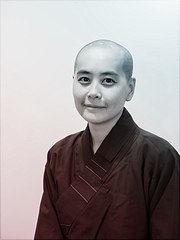 Ven. Jian Cheng is a doctoral candidate in religious studies at Lancaster University, England. Her research focuses on religious practices in contemporary Chan monastic traditions. Her doctoral thesis contributes to the under-studied ‘mindfulness’ in Chan tradition and is the first study in English to offer a systematic introduction to the lived reality of Chung Tai Chan Monastery, one of the most influential Chan monasteries in Taiwan. She has been a Buddhist nun since 2002.
Ven. Jian Cheng is a doctoral candidate in religious studies at Lancaster University, England. Her research focuses on religious practices in contemporary Chan monastic traditions. Her doctoral thesis contributes to the under-studied ‘mindfulness’ in Chan tradition and is the first study in English to offer a systematic introduction to the lived reality of Chung Tai Chan Monastery, one of the most influential Chan monasteries in Taiwan. She has been a Buddhist nun since 2002.
A flyer of of the event may be downloaded here.
The globalization of Buddhism in the 21st century
Dr. Olaf Beuchling, Research Fellow, Numata Center for Buddhist Studies
17. April 2019, 16.15 – 17.45 Uhr
Globalization has been identified as the characteristic feature of Buddhism in the 21st century. According to this, Buddhism has developed from a doctrine of spiritual liberation that originated in the context of the Indian subcontinent 2500 years ago to a world religion that can currently look back on worldwide resonance and spread.
Today Buddhism is the fourth largest world religion after Christianity, Islam and Hinduism. The vast majority of Buddhists still live in Asia, especially in the countries of South, Southeast and East Asia. But Buddhism has also become an integral part of religious landscapes outside Asia, especially in Western affluent societies.
In this talk, we follow the global transmission of Buddhism along several themes and questions: What are the characteristics of contemporary Buddhism that allow us to speak of global Buddhism? Can the world-wide spread of Buddhism on the continents be quantified? How have developments in media technology contributed to fundamental changes in the transmission of Buddhism? What role have individuals as well as groups played and continue to play as pioneers of Buddhist transmission? How have the various cultural contexts in which Buddhism has established itself influenced teaching and practice?
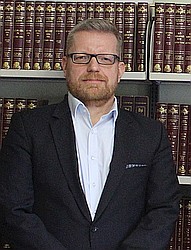
Dr. Olaf Beuchling is a cultural scientist who has taught at various universities in Germany and abroad. He has held professorships at the universities of Magdeburg and Leipzig, was a visiting professor at the Autonomous University of Barcelona and is a research associate at the Numata Center for Buddhist Studies at the University of Hamburg. He has written 6 books and numerous articles translated into German, Vietnamese, English and other languages. His research focuses on the globalization of Buddhism, Vietnamese Buddhism, evolutionary cultural theory and education as cultural transmission.
Veranstalter: Numata-Zentrum für Buddhismuskunde der Universität Hamburg
Ort: Edmund-Siemers-Allee 1, ESA-Ost, Raum 120
Der Flyer der Veranstaltung kann hier heruntergeladen werden.
Transformations of the classical models of meditation praxis
in Chinese Buddhism
Mittwoch, 23.10.2019, 16:15 – 17:45
Universität Hamburg, Asien-Afrika-Institut, Raum 120 ESA Ost
Vortrag in englischer Sprache
The lecture explores major changes in the dominant models of meditation that came to characterize the practice of Chinese Buddhism during the first millennium of its growth and transformation, which to this day continue to shape contemplative praxis throughout East Asian Buddhism. The main line of argument centers on key transformations of the classical model of Buddhist meditation, which postulates two main approaches to contemplative practice: calmness and insight. The main paradigm shifts examined in the lecture include the pairing of the two approaches in the writing of Zhiyi (538–597) and his Tiantai School, and the conceptual and soteriological reconfigurations that unfolded within the flourishing Chan movement during the Tang era (618–907). That is followed by an analysis of the development of a completely new model of Chan meditation during the N. Song period (960-1127), which marked the virtual disappearance of calmness and insight from the everyday vocabulary of Chinese Buddhism.

Mario Poceski is a professor of Buddhist studies and Chinese religions at the University of Florida. He received a PhD in East Asian Languages and Cultures (specialization in Buddhist studies) from the University of California, Los Angeles (2000), and has spent extended periods as a visiting professor or fellow at Komazawa University (Japan), Stanford University, National University of Singapore, University of Hamburg (Germany), Fudan University (China), and University of Erlangen-Nuremberg (Germany). He is a recipient of several prestigious fellowships, including Alexander von Humboldt and Fulbright-Hays.
Prof. Poceski’s numerous publications include Communities of Memory and Interpretation: Reimagining and Reinventing the Past in East Asian Buddhism (Hamburg 2018, ed.), The Records of Mazu and the Making of Classical Chan Literature (Oxford 2015), The Wiley Blackwell Companion to East and Inner Asian Buddhism (Blackwell 2014, ed.), Introducing Chinese Religions (Routledge 2009), and Ordinary Mind as the Way: The Hongzhou School and the Growth of Chan Buddhism (Oxford 2007).
A flyer of the event may be downloaded here.
Thai Bhikkhuni, International Treaties, and Rights of Minorities
Prof. Dr. Manuel Litalien, Department of Social Welfare and Social Development, Nipissing University
09. Juli 2019, 18.15 – 19.45 Uhr
This presentation examines the commitments of Southeast Asian governments, with a focus on Thailand, to gender equality. It looks at regional, and international treaties signed for the promotion of equal gender rights, and then contrasts these formally ratified agreements with the status of Buddhist nuns (Bhikkhuni) in Thailand, and the region. The presentation asks whether the behaviour of the Bhikkhu align with the Convention on the Elimination of All Forms of Discrimination Against Women (CEDAW), adopted in 1979. The spirit of inclusiveness, as laid out in CEDAW, is connecting the notions of gender equality, economic, and culture, to social development, and ultimately the welfare of the world. Despite notable reservations made by some countries, the majority of Southeast Asian nations nevertheless ratified the Convention.
This study considers the role of the Thai Bhikkhuni and the pledge to gender equality, in light of these reservations to CEDAW. The argument suggests that a distinction between the role of women in the public, and the religious spheres are conducive to the creation of an inequality regime (Acker 2009).
The marginalization of women in the religious sphere echoes an under-representation of women not only at top management, but also in professional positions. If political systems across the region advocates for equality and freedoms for all, one may ask how patriarchal religious hierarchy is able to marginalize its female counterpart and at time conflict with the intention of political leaders.

Manuel Litalien is an associate professor at Nipissing University, Department of Social Welfare and Social Development. He is a co-instigator for PhiLab (2018), a funded research group focusing on Philanthropy (https://philab.uqam.ca). He has published a monograph, La philanthropie religieuse en tant que nouveau capital démocratique (Presses de l’Université Laval), and book chapters in Wild Geese: Buddhism in Canada (McGill-Queen’s); Secular States and Religious Diversity (UBC Press); Ethnic Claims and Moral Economies (UBC Press). He has also published in the Journal of Buddhist Ethics (2018). His areas of interest include Southeast Asia, development, welfare regimes, philanthropy, governance, social policy, religion, ethnicity, identity politics, diasporic studies, nationalism and violence. He also currently holds an adjunct position at Mahidol University in Thailand.
Veranstalter: Numata Zentrum für Buddhismuskunde der Universität Hamburg, Akademie der Weltreligionen
Ort: Universität Hamburg, Von-Melle-Park 8 (Erziehungswissenschaften), Raum R08
Der Flyer der Veranstaltung kann hier heruntergeladen werden.
Postmortem Pilgrimage: The Journey to the West as Mortuary Rite
Prof. Dr. Benjamin Brose, Department of Asian Languages and Cultures, University of Michigan
10. Juli 2019, 16.15 – 17.45 Uhr
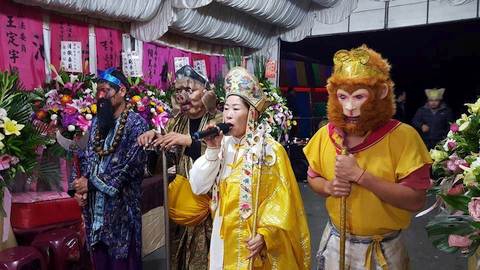
Xuanzang (600/602–664), the celebrated seventh-century Chinese cleric, pilgrim, and scholar, is arguably the most famous monk in the two-thousand year history of Chinese Buddhism. His epic seventeen-year pilgrimage from China to India, his close relationship with two Chinese emperors after his return, his subsequent translation of hundreds of volumes of Sanskrit texts into Chinese, and the influence of those translations and commentaries on Buddhist traditions throughout East Asia have taken on mythic proportions in the literature, liturgy, theater, and popular culture of China and neighboring countries. After his death, Xuanzang was apotheosized as a powerful deity in China and came to be revered as both an exorcistic spirit and as a guide for the souls of the dead.
The historical evolution of Xuanzang’s posthumous cult is closely related to the development of the famous Journey to the West (Xiyou ji), a novel published anonymously in the late sixteenth-century. While the novel and its antecedents have been studied by numerous scholars, the ritual roots of the narrative and its relationship to the deified Xuanzang are not well known.
This talk draws on recently discovered ritual manuals, liturgies, and ethnographic accounts to explore mortuary rites featuring Xuanzang and other figures from the Journey to the West story-cycle.

Benjamin Brose is associate professor of Chinese Religions and Director of Graduate Studies in the Department of Asian Languages and Cultures at the University of Michigan. His recent publications include “The Pig and the Prostitute: The Cult of Zhu Bajie in Modern Taiwan” (Journal of Chinese Religions, 2018) and Patrons and Patriarchs: Regional Rulers and Chan Monks During the Five Dynasties and Ten Kingdoms (University of Hawai’i Press, 2015).
Veranstalter: Numata Zentrum für Buddhismuskunde der Universität Hamburg
Ort: Edmund-Siemers-Allee 1, ESA-Ost, Raum 120
Der Flyer der Veranstaltung kann hier heruntergeladen werden.
Several Indian contexts for buddha-nature (tathāgatagarbha)
Prof. Dr. Michael Radich, Heidelberg Centre for Transcultural Studies, University of Heidelberg
11. Juli 2019, 18.15 – 19.45 Uhr
In this talk, I will place tathāgatagarbha in relation to several contexts in Indian Buddhism and religion. I will attempt to trace an “imaginative logic” linking tathāgatagarbha to these contexts, and accounting (in part) for the emergence of tathāgatagarbha thought and literature. I will attempt thereby to argue that the rigorous and disciplined consideration of the logic behind imagery and terminology can be a useful part of our method in studying the history of Buddhist ideas and practices.
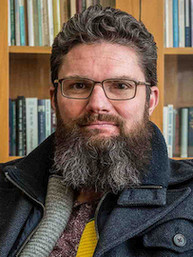
Michael Radich is Professor of Buddhist Studies in the Heidelberg Centre for Transcultural Studies at the University of Heidelberg. He received his PhD from Harvard University in 2008, and then taught and researched for twelve years at Victoria University in Wellington, in his native New Zealand. His research to date has been almost equally devoted to Indian and Chinese Buddhism, with a focus on the Mahāyāna. Topics to which he has devoted special attention include: the bodies of Buddhas; textual history; theories about “consciousness”; tathāgatagarbha doctrine; transformations of Buddhism as it took root in China; and the use of computational philological techniques in application to Buddhist materials.
Veranstalter: Numata Zentrum für Buddhismuskunde der Universität Hamburg
Ort: Edmund-Siemers-Allee 1, AAI/ESA-Ost, Raum 221
Der Flyer der Veranstaltug kann hier heruntergeladen werden.
International Workshop:
New Perspectives on the Idea of Buddha-Nature in Indian Buddhism
July 11 – 13, 2019 at Hamburg University
Recent years have seen a turn in the study of ideas associated with the concept of buddha-nature – ideas that originated in India as part of the Mahayana Buddhist tradition. Long-standing paradigms, established in the 1960s by the eminent Japanese scholar Takasaki Jikido, became questioned. New approaches to explain for the origin of the concept were offered.
During this workshop at Hamburg University, the world’s leading scholars on this subject will gather and discuss these new developments. The workshop aims at throwing light on the questions where we stand now and which directions future research might take.
The workshop is open to the public. Please contact the Numata Center for Buddhist Studies for more information. A flyer with Topics & Abstracts can be downloaded here.
Workshop Schedule
July 11, Thursday 18:15 – 19:45, Asien-Afrika-Institut, ESA-Ost (East Wing) Room 221
Key-note lecture: Prof. Dr. Michael Radich
July 12, Friday 9:00 – 16:00, Von-Melle-Park 8 (VMP 8) Room 213
Prof. Dr. Michael Radich 9:00 – 10:00
PD Dr. Hiromi Habata 10:00 – 11:00
Coffee break
Prof. Dr. Akira Saito 11:30 – 12:30
Lunch
Prof. Dr. Kazuo Kano 14:00 – 15:00
Dr. Christopher V. Jones 15:00 – 16:00
July 13, Saturday 9:00 – 12:30, Von-Melle-Park 8 (VMP 8) Room 213
Prof. Dr. Hong Luo 9:00 – 10:00
Prof. Dr. Masahiro Shimoda 10:00 – 11:00
Coffee Break
Prof. Dr. Michael Zimmermann 11:30 – 12:30
Topics & Abstracts
Key-note lecture: Michael Radich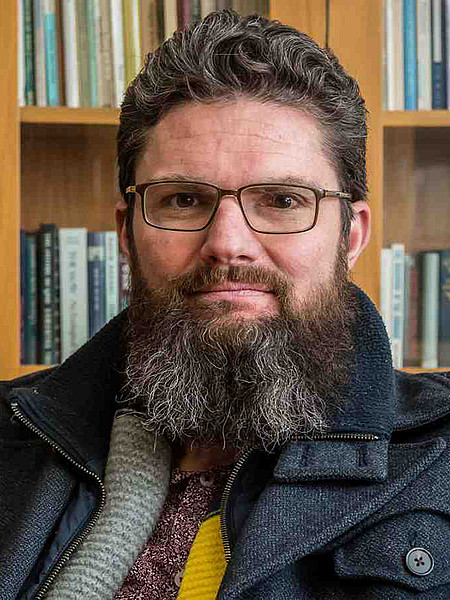
Professor at the Heidelberg Centre for Transcultural Studies, University of Heidelberg
July 11, 18:15 – 19:45, Asien-Afrika-Institut, ESA-Ost (East Wing) Room 221
Several Indian Contexts for Tathāgatagarbha
Abstract: In this talk, I will place tathāgatagarbha in relation to several contexts in Indian Buddhism and religion. I will attempt to trace an “imaginative logic” linking tathāgatagarbha to these contexts, and accounting (in part) for the emergence of tathāgatagarbha thought and literature. I will attempt thereby to argue that the rigorous and disciplined consideration of the logic behind imagery and terminology can be a useful part of our method in studying the history of Buddhist ideas and practices.
Michael Radich
Professor at the Heidelberg Centre for Transcultural Studies, University of Heidelberg
July 12, Friday 9:00 – 10:00, Von-Melle-Park 8 (VMP 8) Room 213
Tathāgatagarbha Doctrine as Part of Patterns of Docetism about the Maternity of Buddhas
Abstract: In this talk, I will reprise arguments from my 2015 monograph, The Mahāparinirvāṇa-mahāsūtra and the Emergence of Tathāgatagarbha Doctrine, relating the emergence of tathāgatagarbha doctrine to patterns of docetism about the bodhisatva/Buddha’s corporeal existence, and especially the problems presented by his apparent conception, gestation, and birth, and the idea that he had an ordinary, physical human mother.
Hiromi Habata
Privatdozent, Research Associate (Indology) at the Ludwig-Maximilians-Universität München
July 12, Friday 10:00 – 11:00, Von-Melle-Park 8 (VMP 8) Room 213
The Amṛta-section in the Mahāparinirvāṇa-mahāsūtra and the Senavarma Inscription
Abstract: The terms for the “Buddha-nature”, tathāgatagarbha, tathāgatadhātu and buddhadhātu are used in the Mahāparinirvāṇa-mahāsūtra. In this sūtra, the word dhātu is used in the meaning ‘element of the body’, and the compound buddhadhātu means ‘element of the body of the Buddha’. Therefore this term is concerned with its original and general meaning ‘relic of the Buddha’. In the section in which the idea amṛta is thematized, the compound buddhadhātu is used obviously with the meaning ‘relic of the Buddha’. This section seems to contain early expressions of the buddhadhātu in the Mahāparinirvāṇa-mahāsūtra and allow a possible interpretation for an earlier stage of the idea of the “Buddha-nature”. Furthermore, the amṛta-section could shed a light on a difficult passage in the Senavarma inscription, of which the interpretation is controversial.
Akira Saito
Professor at the International College for Postgraduate Buddhist Studies and Professor Emeritus at the University of Tokyo
July 12, Friday 11:30 – 12:30, Von-Melle-Park 8 (VMP 8) Room 213
Buddha-Nature or Buddha Within: Revisiting the Meaning of Tathāgatagarbha
Abstract: The topic on what the compound tathāgata-garbha means has indeed a long history of research in the field of Mahāyāna Buddhism. However, despite a good number of studies so far executed on this topic, it is most unfortunate for us to recognize that the above question remains unsolved. The present paper, therefore, tries again to solve the question through an analytical inquiry into the Ratnagotravibhāga (RGV) in rather a wide perspective.
Kazuo Kano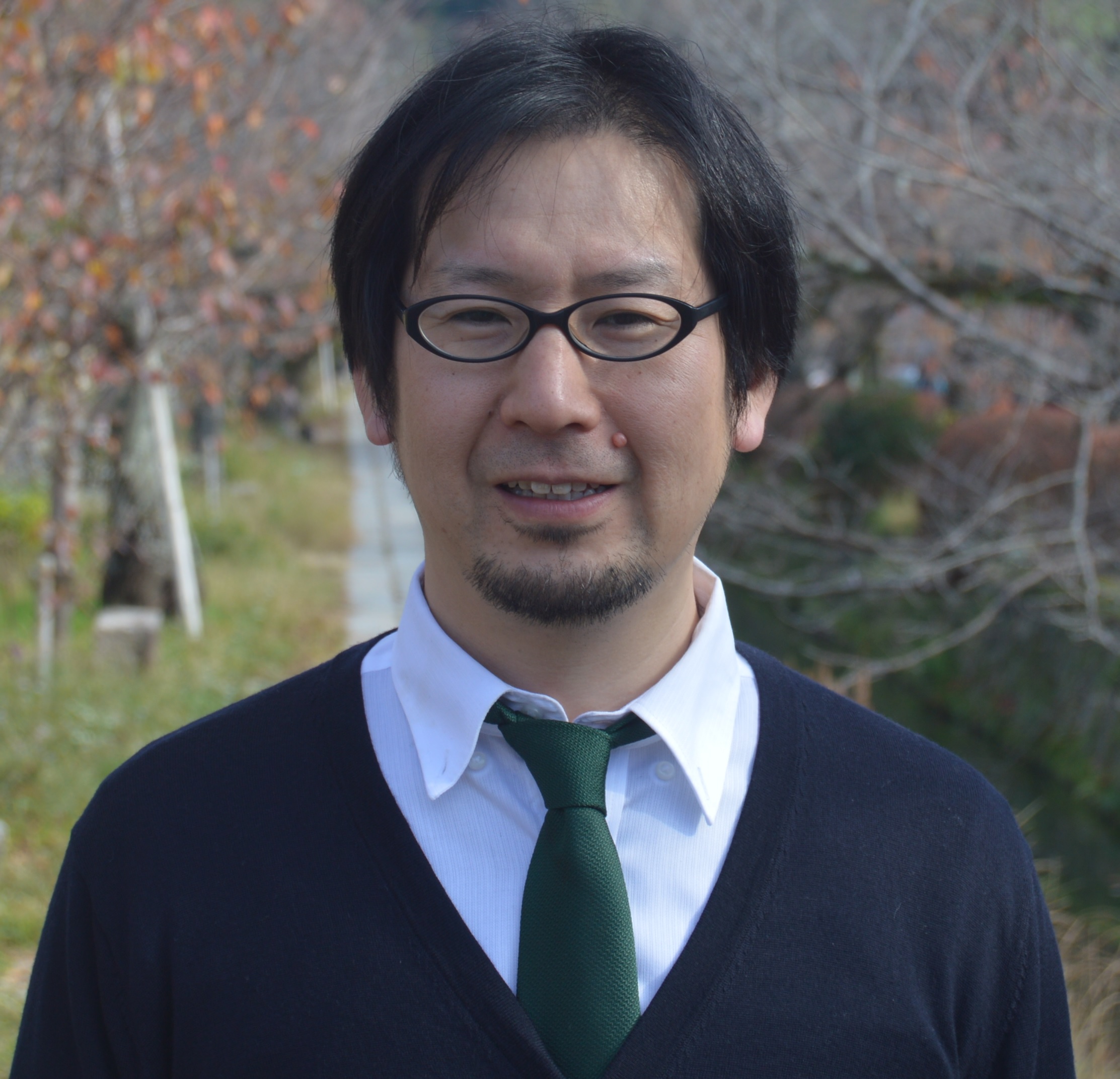
Professor at Komazawa University
July 12, Friday 14:00 – 15:00, Von-Melle-Park 8 (VMP 8) Room 213
To become a Upāsaka without Taking Refuge to the Three Jewels and without Receiving the Five Precepts: Possible Target-audiences/readers of the Mahāparinirvāṇamahāsūtra
Abstract: For attaining upāsaka-ship, as a rule, one has to first take the refuge to the Three Jewels and to receive the Five Precepts in front of Saṃgha's members. The Mahāparinirvāṇamahāsūtra, however, explicitly teaches the upāsakas who should not receive the Five Precepts (for protecting monks) in Vajrābhedyakāya chapter. Likewise, in *Tathāgatadhātu chapter (Habata Tib. ed. §387–391) it denies to take the Three Jewels as a condition for attaining the upāsaka-ship (stating them as mundane refuges) and establishes taking the refuge to solely the buddha within himself (that is, doctrinally supported by the tathāgatagarbha teaching). Also, relevant statements are found in other passages. I shall investigate these passages in detail and try to clarify the idea behind them taking into consideration of further evidences that show the link between upāsakas and this scripture (e.g. the origin from where the Sanskrit manuscripts stems, the connotation of the title mahāsūtra, etc. as studied by Skilling, Hodge, Habata, Shimoda, Radich, etc.). These passages likely suggest that the compiler(s) of this scripture try to justify upāsakas who have no public permission of Saṃgha's majority members and to adopt the tathāgatagarbha teaching to pragmatical purposes.
Christopher V. Jones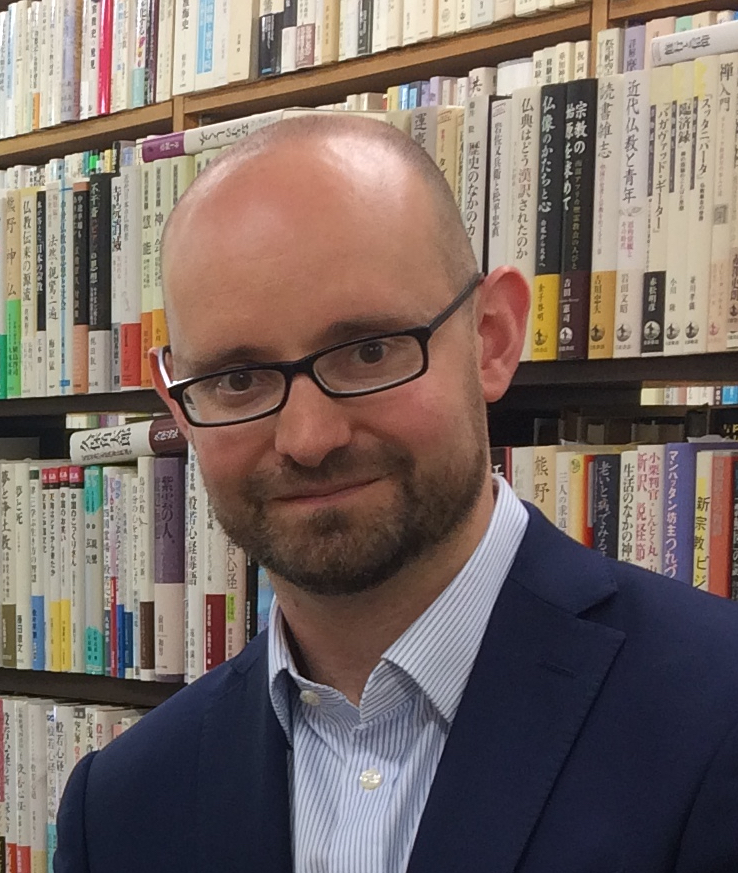
Postdoctoral Research Fellow, Faculty of Oriental Studies & St Peter’s College, University of Oxford
July 12, Friday 15:00 – 16:00, Von-Melle-Park 8 (VMP 8) Room 213
Two Garlands on the Single Vehicle: Ekayāna and Tathāgatagarbha in the Aṅgulimālīya- and Śrīmālā-Sūtras
Abstract: If we accept Michael Radich’s hypothesis that the Mahāparinirvāṇa-mahāsūtra provides our earliest surviving account of the tathāgatagarbha, then we are also invited to reimagine the next stages in the development of teaching about Buddha-nature in India. One important repercussion of this hypothesis is that the earliest instance of teaching about tathāgatagarbha articulates this in terms of some enduring essence or element (dhātu), which sits in conspicuous tension with earlier Buddhist teaching about impermanence and absence of self. Moreover, understanding that tathāgatagarbha refers instead to the intrinsic nature of the mind (e.g. prakṛtipariśuddhacitta) appears to be a reinvention of this expression, presumably in response to an older, more contentious mode of imagining Buddha-nature as something more static or substantial.
Two texts that show awareness of the Mahāparinirvāṇa-mahāsūtra – or at least of its teachings about the tathāgatagarbha – are the Aṅgulimālīyasūtra and Śrīmālādevīsiṃhanādasūtra (henceforth Śrīmālāsūtra). Scholars including Takasaki and Kano have observed interesting similarities between the Aṅgulimālīyasūtra and Śrīmālāsūtra, though it is also very clear that these two works take their accounts of to what the expression tathāgatagarbha must refer in very different directions. This paper will explore the commonalities and differences between the Aṅgulimālīya- and Śrīmālāsūtras. That these texts feature some strikingly similar imagery and ideas – in particular a curious ‘streamlining’ of Buddhist teachings, clearly influenced by the Saddharmapuṇḍarīkasūtra – suggests that the productions of these texts were somehow related, perhaps such that one may even have been imagined as a response to the other.
Hong Luo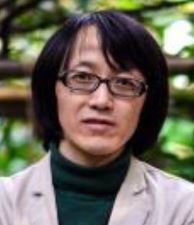
Professor at the Institute for Tibetan Studies of Sichuan University
July 13, Saturday 9:00 – 10:00, Von-Melle-Park 8 (VMP 8) Room 213
An Anachronistic Analogy: Rereading the Dasheng Qixin Lun in the Light of Ratnākaraśānti’s Prajñāpāramitopadeśa
Abstract: This paper aims to present and observe answers, gleaned respectively from the Dasheng Qixin Lun (大乘起信論, *Mahāyāna-śraddhotpādaśāstra) and Ratnākaraśānti’s (ca. 970–1045) Prajñāpāramitopadeśa, to the following four questions: 1) What is the being? 2) How is the saṃsāra functioning? 3) How is the real connected with the unreal? 4) What is the ultimate?
Correspondingly, we shall focus on four concepts taken from the Dasheng Qixin Lun, the two perspectives of the single mind (一心二門, Yi-xin Er-men), the intermingling mind (和合識, He-he Shi), the perfuming between the real and the unreal (真妄互熏, Zhen-wang Hu-xun), and the essence of perception (覺性, Jue-xing), a term used in Paramārtha’s (499–569, 真谛, Zhen-di) translation of the Dasheng Qixin Lun and corresponds to the original perception (本覺, Ben-jue) used by Śikṣānanda (652–710, 實叉難陀, Shi-cha-nan-tuo). For the Dasheng Qixin Lun, to be consists of, simultaneously, the perspective of the suchness of the mind (心真如門, Xin Zhen-ru Men) and the perspective of the arising and dissolving of the mind (心生滅門, Xin Sheng-mie Men). For Ratnākaraśānti, to further trace his sources demands a separate occasion, the paratantra, which is nothing but the abhūtaparikalpa, has two orientations, it becomes parikalpita if thus sensed, it becomes pariniṣpanna, if sensed as such.
For the Dasheng Qixin Lun, the saṃsāra, the perspective of arising and dissolving, is the ālayavijñāna (阿梨耶識, A-li-ye Shi), which is the intermingling of, on the one hand, the arising and dissolving, and on the other hand, that which transcends both. For Ratnākaraśānti, the saṃsāra, the imagination of the unreal (abhūtaparikalpa), is the interplay of the false image (ākāra) and the sole and ultimate real luminosity (prakāśamātra). For the Dasheng Qixin Lun, the real, the tathatā (Zhen-ru, 真如), though devoid of any contamination, appears contaminated due to the perfuming of the unreal; the unreal, the avidyā (無明, Wu-ming), though devoid of any uncontaminated function, functions in a way conducive to the tathatā due to the perfuming of the tathatā. For Ratnākaraśānti, the real, the prakāśa, coexist with the unreal, the ākāra, in a way defined by him as the superimposed two-in-one (tādātmya).
For the fourth topic, we shall propose prakāśamānatā / prakāśātmatā / prakāśātmatva as other possible Sanskrit equivalents of the essence of perception, a synonym of the essence of knowing (解性, Jie-xing) used by Paramārtha and others in related texts.
Finally, we shall re-examine a few conclusions on the Dasheng Qixin Lun drawn in secondary literature, and address the significance of the late Mādhyamika literature to Buddhist studies.
Masahiro Shimoda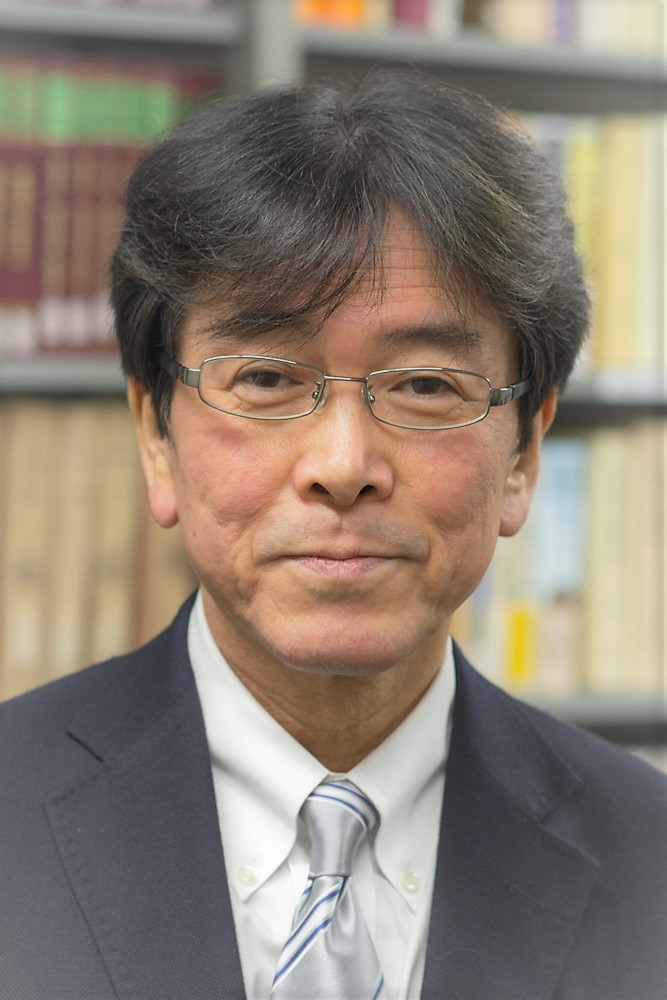
Professor at University of Tokyo
July 13, Saturday 10:00 – 11:00, Von-Melle-Park 8 (VMP 8) Room 213
A Linguistic Domain as a Field of Consciousness: Appearance of a New Mode of Discourse in Mahāyāna Sūtras and the Germination of the Soteriology of Tathāgatagarbha Doctrine
Abstract: It seems that the biting criticism by Critical Buddhism of tathāgatagarbha doctrine as being an argument that nullifies the significance of practice by substantiating the principle of salvation has not yet been fully refuted. In order to demonstrate that this criticism has gone amiss, three points should be explained in systematic order: first, the existence of a difference in methodology between a descriptive approach resulting in a history of thought and a normative one to be shown in a theoretical structure; second, two-tiered configuration in salvation in religions in general that manifests as polemic dichotomy such as sacred vs. profane, nirvāṇa vs. saṃsāra, and so forth; and third, the relationship of the difference in mode of discourse to its corresponding characteristics of theory. The last point among these three deserves special attention since, up to today, this point has not been addressed in the works of scholars of Buddhism. As leading theorists involved in the articulation of the linguistic turn in history such as Hayden White, Paul Ricœur, and Jacque Derrida demonstrate, a linguistic domain functions as a field of consciousness for the reader of the text. The characteristic feature in the discourse of the Ratnagotravibhāga that weaves various citations from various Mahāyāna sūtras into a system of thought as tathāgatagarbha theory reveals that this doctrine is made possible by the distinguishing characteristic mode of discourse in Mahāyāna sūtras that converts the perspective of discourse from the dimension of sentient beings in the profane to that of the fully awakened ones in the sacred.
Michael Zimmermann
Professor at the Numata Center for Buddhist Studies at Hamburg University
July 13, Saturday 11:30 – 12:30, Von-Melle-Park 8 (VMP 8) Room 213
Research on Buddha-Nature in Past and Future: Where are We Heading to?
Abstract: Research on the concept that all living beings have buddha-nature comes along with a wide spectrum of associations. The topic can be approached from different perspectives. As a multi-dimensional subject of study, it can reveal an intrinsic Buddhist stand towards the world, be it in its historical ramifications or now, when Buddhists reflect on alternative models of engaging with the world. The talk will summarize the outcome of this workshop and try to draw conclusions relevant for the issue what some of the crucial questions on the concept of buddha-nature in the future will be. It will set the ground for a final round of discussion among the speakers and other specialists in the audience.
A flyer with Topics & Abstracts can be downloaded here.
Gehört der Buddhismus zu Deutschland?
Die Relevanz des Buddhismus für die Welt von heute
19. Juni 2018, 18.15-19.45 Uhr
Dr. Carola Roloff (Akademie der Weltreligionen, Universität Hamburg)
mit einer Begrüßung durch die Prodekanin für Studium, Lehre und Prüfungswesen an der Fakultät Erziehungswissenschaft, Frau Prof. Dr. MHEd. Telse A. Iwers, den Direktor der Akademie der Weltreligionen, Prof. Dr. Giuseppe Veltri, einer kurzen Einführung zur Historie der Professur durch Prof. Dr. Wolfram Weiße und anschließender Diskussion mit Prof. Dr. Michael von Brück, Ludwig-Maximilians-Universität München, Moderation: Prof. Dr. Michael Zimmermann
In Deutschland gibt es etwa eine Viertelmillion Buddhisten. Damit ist der Buddhismus nach dem Islam die zweitstärkste Minoritätenreligion. Trotzdem genießt er in Deutschland noch keinen öffentlichen Rechtsstatus und erfährt damit auch keine öffentliche Förderung. Beides hat negative Auswirkungen auf mögliche Betätigungsfelder.
In der Gesellschaft jedoch ist der Buddhismus bereits angekommen; sein Einfluss auf die westliche Kultur ist deutlich spürbar. Mit seinen Methoden der Achtsamkeit, Meditation und Geistesschulung gibt er Buddhisten wie Nicht-Buddhisten Werkzeuge an die Hand, die zu innerem Frieden beitragen können und dadurch zu einem harmonischeren gesellschaftlichen Miteinander. Sein positives Potenzial kann der Buddhismus im Westen aber nur entfalten, wenn er die Ideale der europäischen Aufklärung berücksichtigt.
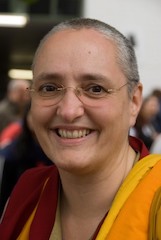
Dr. Carola Roloff ist Gastprofessorin für Buddhismus an der Akademie der Weltreligionen der Universität Hamburg (Stiftungsdozentur bis Frühjahr 2025). Sie studierte von 1981 bis 1996 tibetisch-buddhistische Philosophie und Praxis mit Geshe Thubten Ngawang im Tibetischen Zentrum e.V. und danach Tibetologie und Klassische Indologie mit Schwerpunkt Buddhismuskunde am Asien-Afrika-Institut der Universität Hamburg (Magister 2003, Promotion 2009).
Ihr aktueller Schwerpunkt in Forschung und Lehre ist „Buddhismus und Dialog in modernen Gesellschaften“. Weitere Forschungsthemen sind: Interreligiöser Dialog, Buddhismus zwischen Tradition und Moderne, Achtsamkeit und andere meditative Techniken, Sozial Engagierter Buddhismus sowie Wechselwirkungen zwischen Gender und Religionen und deren Bedeutung für gesellschaftliche Dialogprozesse weltweit.
Veranstalter: Numata-Zentrum für Buddhismuskunde der Universität Hamburg und Akademie der Weltreligionen, Universität Hamburg
Ort: Universität Hamburg, Anna-Siemsen-Hörsaal, Von-Melle-Park 8
Anmeldung per E-Mail erforderlich bis zum 18. Juni 2018: awr@uni-hamburg.de
Der Flyer der Veranstaltungsreihe kann hier heruntergeladen werden.
Development in Buddhist Education and Archive Building in Luang Prabang
Mi, 20.06.2018, 18:00 Uhr, bis 20:00, Asien-Afrika-Institut, Edmund-Siemers-Allee 1, 20146 Hamburg, Ostflügel / Eastern Wing, R. 123
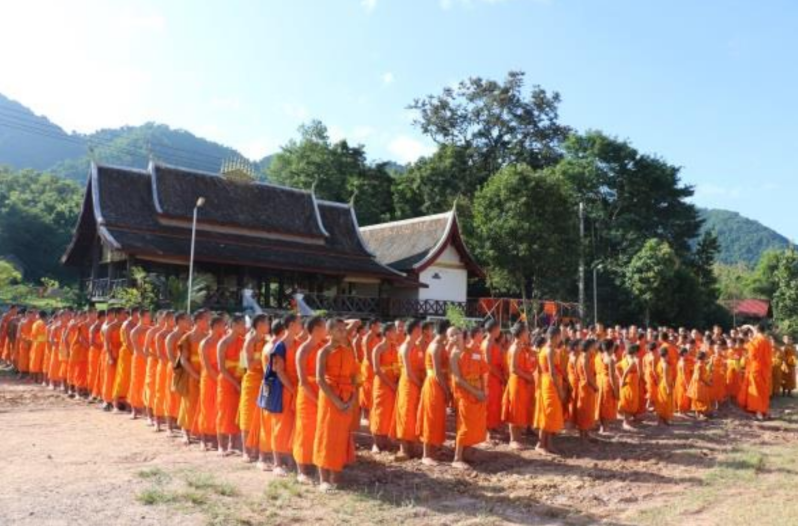
The UNESCO world heritage site of Luang Prabang has been the centre of Lao Buddhism and culture since the mid-fourteenth century. Theravada Buddhism has flourished in this ancient city since then. In the 2000s, two important Buddhist institutions were established in Luang Prabang, namely the Buddhist Academy and the Buddhist Archives. The Buddhist Academy at the monastery of Vat Pa Pha O, situated some 10 km to the north of Luang Prabang town, represents one of the landmarks of Buddhist educational development not only in Luang Prabang but in the whole of northern Laos. The Academy provides a chance for boys from poor families in remote villages to get a proper education. At present, more than 500 novices live and study in the monastery under the supervision of the Most Venerable Pha One Keo Sittivong. Being both a burden and challenge, the Venerable will talk about the reasons which inspired him to set up this institute of Buddhist education. Since its foundation in 2007 by a charismatic monk, the Most Venerable Sathu Nyai Khamchan Virachitta Maha Thela (1920–2007), and the German writer and photographer Hans Georg Berger, the Buddhist Archives houses one of the largest collections of historical photographs, printed books and handwritten documents related to Theravada Buddhism in Southeast Asia. Therefore, this institution provides useful tools for the study of Lao Buddhism, culture and history.
The link to the flyer can be found here.
Buddhismus im Dialog mit Modernen Gesellschaften
20.-22. Juni 2018 Museum für Völkerkunde, Großer Hörsaal, Hamburg
Wir laden sie herzlich ein zur internationalen interdisziplinären Konferenz "Buddhism in Dialogue with Contemporary Societies", die vom 20. bis 22. Juni 2018 wird im Völkerkundemuseum in Hamburg stattfinden wird. Der Fokus dieser Konferenz liegt auf dem Dialog zwischen der buddhistischen Tradition und der westlichen Gesellschaft. Nähere Angaben und das detaillierte Programm können sie hier finden.
Die Teilnahme an der Konferenz erfordert eine Anmeldung, die unter diesem Link möglich ist.
The Mindfulness Movement and the Erasure of Buddhism
Prof. Mario Poceski (University of Florida)
25. Juni 2018, 18-20 Uhr
Raum 121, Edmund-Siemers-Allee 1, Ostflügel
The practice of mindfulness has been an integral part of the Buddhist landscape for long time. Its newfound popularity, however, represents a distinct stage in the diffusion and mainstreaming of Buddhist ideas and practices within American and other Western societies. While many may view this as a desirable or positive development, in the process Buddhism as a living tradition often becomes absent from the picture. That is especially the case in the growing recognition and deployment of mindfulness practice in various secular settings—including schools, corporations, governmental agencies, and clinics—which raises a number of pertinent questions. The lecture will primarily explore if the simplified and secularized brand of mindfulness, as deployed in hospitals, schools, or corporate environments, should be deemed to constitute a form of cultural (mis)appropriation. While it is difficult to foresee Buddhist organizations trademarking the term and the practice, along the lines of what corporations do with their intellectual property, one could argue that there should be clearer calls for disclosure and honesty about the origins of the practice, and open acknowledgement of the central role of Buddhism. That can also pave the way for a more candid and nuanced reassessment of the whole mindfulness movement. Bringing a more traditional Buddhist perspective can perhaps even lead to a clearer understanding of some of the downsides—including the missed opportunities and things lost—in this specific instance of spiritual commodification and cultural (mis)appropriation.
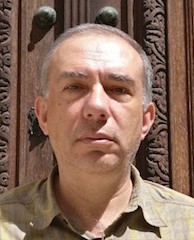
Mario Poceski, a professor of Buddhist studies and Chinese religions at the Religion Department, University of Florida, received a PhD in East Asian Languages and Cultures, with specialization in Buddhist studies, from the University of California, Los Angeles (2000). He has spent extended periods as a visiting researcher at Komazawa University (Japan), Stanford University, the National University of Singapore, the University of Hamburg (Germany), and Fudan University (China), and has received several prestigious fellowships, including an Alexander von Humboldt Research Fellowship. Prof. Poceski’s most recent books are Communities of Memory and Interpretation: Reimagining and Reinventing the Past in East Asian Buddhism (Hamburg 2017, ed.), The Records of Mazu and the Making of Classical Chan Literature (Oxford 2015), The Wiley Blackwell Companion to East and Inner Asian Buddhism (Blackwell 2014, ed.), Introducing Chinese Religions (Routledge 2009), and Ordinary Mind as the Way: The Hongzhou School and the Growth of Chan Buddhism (Oxford 2007). His publications also include two other books and numerous articles and chapters on various aspects of Buddhist studies.
Der Flyer der Veranstaltungsreihe kann hier heruntergeladen werden.
The Hastikakṣyasūtra: Some Reflections on an Early Mahāyāna Text
Prof. Dr. Zhen Liu, Professor in the National Institute for Advanced Humanistic Studies, Director of Center for Gandhian and Indian Studies, Fudan University, Shanghai
07. November 2018, 16.15 Uhr
The lecture attempts to investigate a Sanskrit fragment of a Mahāyānasūtra, the Hastikakṣyasūtra, and compare it to its corresponding Chinese and Tibetan translations. Through a comparison of all extant titles of this text found in both the Chinese and Tibetan versions and their reconstructions in Sanskrit, this work further throws light on the question why some titles use the metaphor of the effort or power of an elephant. In conclusion it will become clear that by analyzing the Chinese and Tibetan versions, the content and structure of this text can shed some important light on the early development of Mahāyānasūtras.
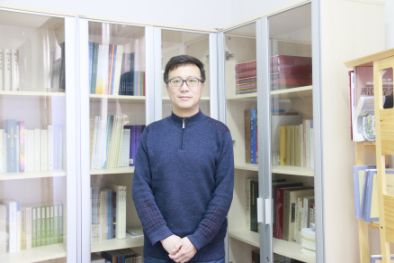
Prof. Dr. Zhen Liu studied Indology and Tibetology at the Institute for Indology and Tibetology at Munich University (2001-2008). In 2005 he attained an M.A. degree with the thesis Das Maitreyavyākaraṇa - Ein Vergleich der verschiedenen Fassungen mit einer Übersetzung des Sanskrit-Textes (The Maitreyavyākaraṇa - A Comparison of the Different Versions with a Translation of the Sanskrit Text). In 2008 he got his Ph.D. degree with a dissertation titles Versenkung und Askese. Eine neue Sanskrit-Quelle zur Buddha-Legende (Meditation and Asceticism - A New Sanskrit Source for the Buddha Legend). Liu is now professor at the National Institute for Advanced Humanistic Studies, and director of the Center for Gandhian and Indian Studies at Fudan University, Shanghai. His research specialties are the comparison between Chinese and Indian literature, Indian Mahāyāna and Hīnayāna Buddhism, Sanskrit manuscripts, the Veda and Vedic literature.
Veranstalter: Numata-Zentrum für Buddhismuskunde der Universität Hamburg
Ort: Edmund-Siemers-Allee 1, ESA-Ost, Raum 120
Der Flyer der Veranstaltung kann hier heruntergeladen werden.
Symposium: Current Topics in Buddhist Studies
14. November 2018, 9.00 - 17.45 Uhr
Das Numata Zentrum für Buddhismuskunde lädt Sie gemeinsam mit dem Center for Buddhist Studies at Fo Guang University Taiwan herzlich zu dem Symposium “Current Topics in Buddhist Studies” ein.
Im Rahmen des eintägigen Symposiums befassen sich sechs Vorlesungen, die die aktuelle Forschung im Bereich Buddhismuskunde präsentieren und diskutieren, mit einem weitreichenden Themengebiet von chinesischem Buddhismus über Yogācāra-Vajrayāna, japanischen Chan Meistern bis hin zu indischem Mahāyāna-Buddhismus:
Yi-hsun Huang: “Chan Master Hanyue’s Attitude toward Sutra Teachings in the Ming”
Harunaga Isaacson: “Faith (śraddhā), Excessive Faith (atiśraddhā), and Liking (ruci): Some Aspects of the Eleventh-Century Yogācāra-Vajrayāna of Ratnākaraśānti and Jñānaśrīmitra”
Adrian Tseng: "Jizang's Concept of Buddha-nature with regard to insentient things"
Steffen Döll: “A Single Golden Dragon up My Sleeve. Chan Masters in Japan, 1246–1317”
Eric Goodell: “Translating a Translated Text: The Dharmaguptaka Vinaya”
Michael Zimmerman: “The Ruler as Deity, Bodhisattva or Buddha: Missing Evidence in Indian Mahāyāna Buddhism”
Eine abschließende Diskussion bietet Gelegenheit zur Zusammenfassung und Kontextualisierung der auf dem Symposium erlangten Ergebnisse.
Veranstalter: Numata-Zentrum für Buddhismuskunde der Universität Hamburg, Center for Buddhist Studies at Fo Guang University Taiwan
Ort: Universität Hamburg, Weißer Saal, Rothenbaumchaussee 45, Hamburg
Der Flyer der Veranstaltung kann hier heruntergeladen werden.
Nang Nak—Ghost Wife: Desire, Embodiment, and Buddhist Melancholia in a Contemporary Thai Ghost Film
Arnika Fuhrmann, Assistant Professor of Southeast Asian Studies, Department of Asian Studies, Cornell University
21.November 2018, 16.15 Uhr
The 1999 Thai ghost film Nang Nak renders desire and sexual personhood in the idioms of Buddhist pedagogies and economies of desire. Examining how the core Buddhist trope of the negativity of female embodiment works in present-day cinema and policy, this analysis of the globally circulating heritage film Nang Nak questions the relations of haunting to historical injury and repair.
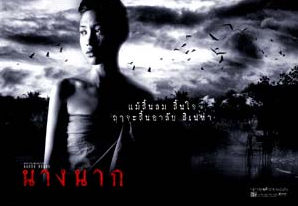
The talk shows how new forms of cinematic representation take recourse to Buddhism and parallel the ways in which sexual and economic sufficiency policies draw on Buddhist concepts. Thus the trope of Buddhist melancholia furnishes a convention that in mainstream film figures nationalist heteronormativity, and Buddhist understandings of the temporal dimensions of desire frequently concur with the “time of capital” and the “time of the nation.”
Finally, the talk demonstrates how the temporal incongruity of haunting can also be made available to feminist interpretation. When Buddhist stories highlight the difficulty of giving up attachment, these stories—as well as women’s devotional practices related to the ghost Nak—also become counterdoctrinal and highlight the persistence of women’s desires.
Arnika Fuhrmann is an interdisciplinary scholar of Southeast Asia, working at the intersections of the region’s aesthetic and political modernities. Her book Ghostly Desires: Queer Sexuality and Vernacular Buddhism in Contemporary Thai Cinema (Duke University Press, 2016) examines how Buddhist-coded anachronisms of haunting figure struggles over sexuality, personhood, and notions of collectivity in contemporary Thai cinema. In a new research project, Fuhrmann focuses on new media and how the study of the digital allows for a perspective on the political public sphere that transcends commonplace distinctions between liberalism and illiberalism. This project intersects with her interests in the transformation of cities in contemporary Southeast and East Asia. She is currently Assistant Professor of Southeast Asian Studies in Cornell University’s Department of Asian Studies.
Veranstalter: Numata-Zentrum für Buddhismuskunde der Universität Hamburg
Ort: Edmund-Siemers-Allee 1, ESA-Ost, Raum 120
Der Flyer der Veranstaltung kann hier heruntergeladen werden.
And Guṇaprabha revived the Vinayapiṭaka (德光乃再弘律藏): The Vinayasūtra and the rise of the Mūlasarvāstivādin tradition
Prof. Dr. Hong Luo, Professor for religious studies at the Center for Tibetan Studies, Sichuan University, China
28. November 2018, 16.15 Uhr
For Xuanzang 玄奘 (600‒664), Guṇaprabha (550‒630) is an unsuccessful Buddhist misled by the hinayanic doctrine. For Yijing 義淨 (635‒713), who, like Xuanzang, studied in Nālandā, however, Guṇaprabha is a great Vinayadhara whose achievements match those of Nāgārjuna and Asaṅga.
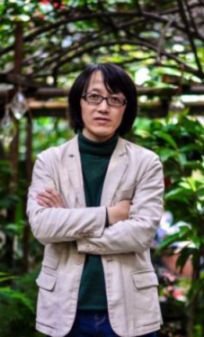
Along with the positive account of Guṇaprabha, Yijing also documented for the first time the term *Mūlasarvāstivādanikāya in the Nanhai Jigui Neifazhuan 南海寄歸內法傳. We shall weigh the divergences between the records of the two Chinese pilgrims against the related Sanskrit and Tibetan materials, and suggest that the Vinayasūtra, more precisely, Guṇaprabha’s Vinayasūtra was an unmistakable sign of the rise of the Mūlasarvāstivādin tradition.
Prof. Dr. Hong Luo received his PhD from Peking University in 2007 with a dissertation on the Pravrajyāvastu of Guṇaprabha’s Vinayasūtra. From 2007 to 2017, he was affiliated with the China Tibetology Research Center and worked for cooperative international projects on editing Sanskrit manuscripts preserved in Tibet. In 2018, he became professor for religious studies at the Center for Tibetan Studies of Sichuan University, China.
Veranstalter: Numata-Zentrum für Buddhismuskunde der Universität Hamburg
Ort: Edmund-Siemers-Allee 1, ESA-Ost, Raum 120
Der Flyer der Veranstaltung kann hier heruntergeladen werden.
Spende der 20-bändigen Encyclopedia of Buddhist Arts an die Bibliothek des Asien-Afrika-Instituts & Forum zu buddhistischer Kunst in der heutigen Welt
7. Dezember 2018, 14 - 17 Uhr
Das Numata Zentrum für Buddhismuskunde lädt Sie herzlich zu einem gemeinsamen Nachmittag mit dem Fo Guang Shan Kloster ein.
Feiern Sie mit uns die Spende der 20-bändigen Encyclopedia of Buddhist Arts an die Bibliothek des Asien-Afrika-Instituts mit anschließender Pause bei Tee und Snacks und nehmen Sie am Forum zu buddhistischer Kunst in der heutigen Welt Teil.
Teil 1: 14 - 14.30 Uhr:
Begrüßung und Spendenzeremonie
Ansprachen von Vertretern der Universität Hamburg und des Fo Guang Shan Kloster (Berlin, London)
Pause bei Tee und Snacks
Teil 2: 15.30 - 17 Uhr:
Forum zu buddhistischer Kunst in der heutigen Welt
Kurzpräsentationen von Präsident und Mitgliedern der London Buddhist Research Study Group
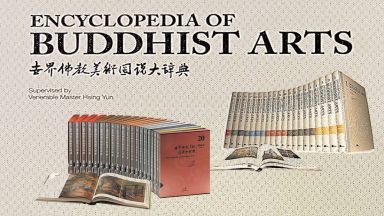
Die 20-bändige Encyclopedia of Buddhist Arts, herausgegeben vom Fo Guang Shan im März 2013, ist das erste große moderne Kompendium weltweiter buddhistischer Kunst. Vier Bände zu buddhistischer Architektur, fünf Bände zu Höhlen, vier zu buddhistischer Bildhauerei, drei zu Malerei, einen zu Handwerk, einen zu Kalligraphie und Siegelkunst, einen zu Biographien und einen Index umfassend, besteht dieses Werk aus 3,8 Millionen chinesischen Schriftzeichen und 15.000 Bildern. In ihrer Gesamtheit bildet die Enzyklopädie ein Grundlagenwerk, dass ganz deutlich eine Lücke unter den taiwanesischen Publikationen zu buddhistischer Kunst schließt. Zweifellos stellt ihre Spende an die Bibliothek des Asien-Afrika-Instituts für Wissenschaftler wie Studenten im Bereich buddhistische Künste einen großen Gewinn dar.
Veranstalter: Numata-Zentrum für Buddhismuskunde der Universität Hamburg
Ort: Universität Hamburg, Edmund-Siemers-Allee 1, Hauptgebäude, Akademischer Senatssaal
Hinweis: Die Veranstaltung findet auf Englisch statt.
Der Flyer der Veranstaltung kann hier heruntergeladen werden.
From Saffron Revolution to Mabatha: Religion and Nationalism in Burma
Alexander Horstmann, Associate Professor of Modern Southeast Asian Studies, School of Humanities, Tallinn University
10. Januar 2019, 18.15 Uhr
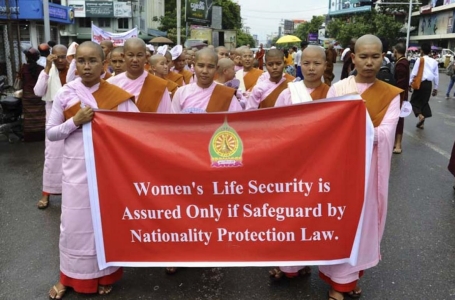
In 2007, a social movement of Buddhist monks took to the streets to protest against the military junta and to support Aung San Suu Kyi. This movement coincided with the student movement and was violently suppressed, because the generals wanted to keep in power and were afraid of the revenge of the National League for Democracy (NLD). Now, things are changing.
A new movement emerged, but with anti-democratic intentions, called MaBaTha: The organization to protect race and religion. This organization successfully campaigned for the implementation of 4 Religious Protection laws that were mainly targeted against marriage of poor Buddhist women with Muslim men. MaBaTha has lately come into conflict with the religious organization of the state, but has established close links to some military generals. More important, MaBaTha donates the religious organization of the laity in present-day Burma (Myanmar) and is also greatly popular among Buddhists in Mon, Shan and Kayin states.
The presentation will discuss these issues and especially the meaning of the rise of religious nationalism for the fragile semi-democratic opening and for the future of multi-religious Myanmar and especially for the peace process in the ethnic minority regions. It will also discuss the role of Buddhist political activism in the Theravada Buddhist world and Islamophobia in particular.

Alexander Horstmann is Associate Professor of Modern Southeast Asian Studies at the School of Humanities at Tallinn University, Estonia. His main research interests include Asian borderland studies, human rights and humanitarianism, religion and refugees, minority studies, and Theravada Buddhism. His teaching in Tallinn includes Asian societies and politics, Everyday Multiculturalism, interdisciplinary LIFE courses, and PhD courses in cultural studies. He published 7 books and numerous research articles on the anthropology and sociology of Southeast Asia and beyond, most recently with Jin-Heon Jung (2015): Building Noah’s Ark for Migrants, Refugees, and Religious Communities , Palgrave (Anthropology of Asia Series). Alexander Horstmann was a research fellow and research partner in the Department of Religious Diversity at Max Planck Institute for the study of religious diversity.
Veranstalter: Numata-Zentrum für Buddhismuskunde der Universität Hamburg, Hamburger Gesellschaft für Thaiistik e.V. mit dem Arbeitsbereich Thaiistik der Abteilung Sprachen und Kulturen Südostasiens
Ort: Edmund-Siemers-Allee 1, ESA-Ost, Raum 123
Der Flyer der Veranstaltung kann hier heruntergeladen werden.

